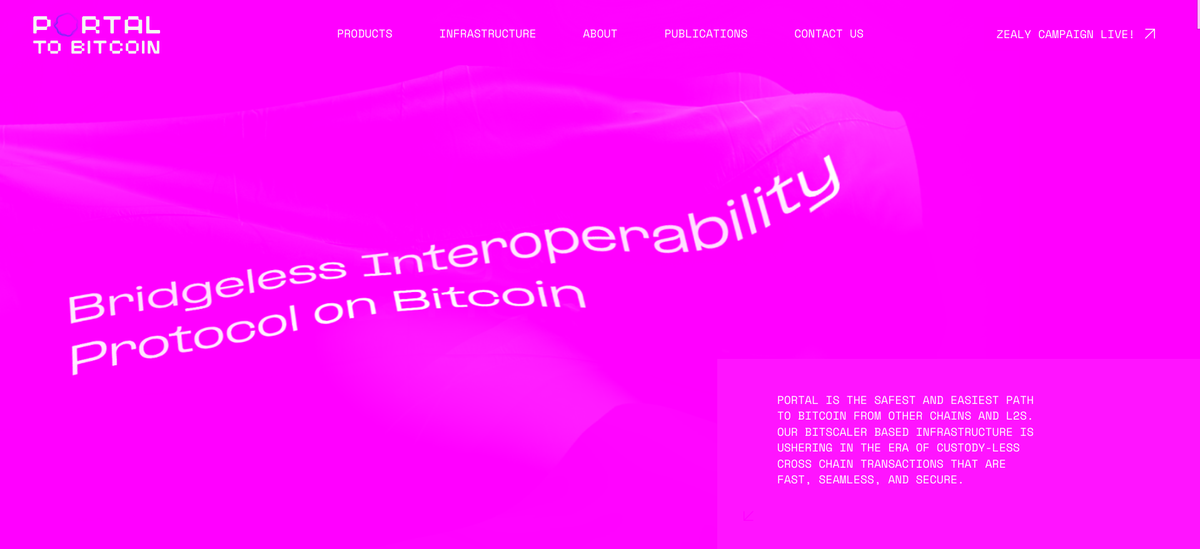Portal Networks Swap Protocol
Portal Swap Protocol is a new protocol that enhances the atomic swap process by introducing a concept called 'portal nodes'

The Portal Swap Protocol (PSP) is a cutting-edge technology that allows for seamless and secure swapping of assets across different blockchains. This protocol is designed to address the interoperability challenges faced by decentralized finance (DeFi) platforms, enabling users to easily exchange assets between various blockchain networks.
One of the key features of the PSP is its use of atomic swaps, which ensure that the exchange of assets occurs simultaneously or not at all. This eliminates the risk of one party failing to fulfill their end of the bargain, providing a high level of security for users engaging in asset swaps.
Furthermore, the PSP leverages smart contracts to automate the asset swapping process, reducing the need for intermediaries and streamlining transactions. This not only increases the efficiency of asset swaps but also reduces costs associated with traditional exchange methods.
The PSP also supports a wide range of assets, including cryptocurrencies, tokens, and other digital assets. This flexibility allows users to exchange a diverse array of assets across different blockchains, opening up new possibilities for decentralized finance applications.
Understanding Portal Swap Protocol Atomic Swaps
In the world of cryptocurrency and blockchain technology, atomic swaps have become a popular method for exchanging digital assets without the need for a trusted third party. One of the latest advancements in this space is the PSP, which aims to improve the efficiency and security of atomic swaps.
What are Atomic Swaps?
Atomic swaps, also known as cross-chain swaps, are smart contracts that allow users to exchange one cryptocurrency for another without the need for a centralized exchange. This process ensures that either both parties receive the agreed-upon assets, or neither party receives anything at all. This eliminates the risk of one party failing to fulfill their end of the bargain.
The PSP enhances the atomic swap process by introducing a concept known as "portal nodes." These nodes act as intermediaries between the two parties involved in the swap, helping to facilitate the exchange of assets in a secure and efficient manner. One of the key features of the PSP is its use of hashed timelock contracts (HTLCs) to ensure that the swap is completed successfully. HTLCs require both parties to acknowledge the completion of the swap within a specified time frame, adding an extra layer of security to the process.
python
# Example of a hashed timelock contract in the Portal Swap Protocol
def create_htlc(secret, locktime): hashed_secret = hash(secret)
return { "hashed_secret": hashed_secret, "locktime": locktime }
Benefits of Portal Swap Protocol Atomic Swaps
- Enhanced Security: The use of portal nodes and HTLCs adds an extra layer of security to the atomic swap process, reducing the risk of fraud or manipulation.
- Efficiency: By streamlining the exchange process, the PSP helps to reduce the time and resources required to complete a swap.
- Decentralization: Atomic swaps are inherently decentralized, allowing users to exchange assets without relying on a centralized exchange. In conclusion, the PSP is an exciting development in the world of atomic swaps, offering enhanced security and efficiency for users looking to exchange digital assets. By leveraging portal nodes and HTLCs, this protocol is paving the way for a more secure and decentralized future in cryptocurrency trading.
Cross-Chain AMM Swaps on Portal Swap Protocol
Automated Market Makers (AMMs) have revolutionized the way DeFi users can swap tokens without the need for traditional order books. One of the latest innovations in this space is the PSP, which enables cross-chain AMM swaps. ## Understanding Cross-Chain AMM Swaps Cross-chain AMM swaps refer to the ability to exchange tokens between different blockchain networks using an AMM protocol. This is particularly useful for users who hold assets on multiple chains and want to seamlessly trade between them without relying on centralized exchanges. The PSP leverages the concept of liquidity pools and smart contracts to facilitate cross-chain swaps. By providing liquidity to these pools, users can earn fees and participate in the swapping process.
How Portal Swap Protocol Works
The PSP uses a network of relayers to facilitate cross-chain swaps. These relayers act as intermediaries between different blockchain networks, enabling the transfer of assets in a trustless and decentralized manner. Here is a simplified overview of how a cross-chain AMM swap works on the PSP:
- User A wants to swap Token X on Chain A for Token Y on Chain B.
- User A interacts with the PSP smart contract on Chain A, specifying the amount of Token X to swap and the desired amount of Token Y to receive.
- The smart contract locks the specified amount of Token X in a liquidity pool on Chain A.
- The relayer network verifies the transaction and initiates the swap process.
- The equivalent amount of Token Y is minted on Chain B and sent to User A's wallet.
What's Next?:
In our second article of the 3 part series, we'll explore Portal's revolutionary stock/crypto trading AI product called RAFA.Until next time...




